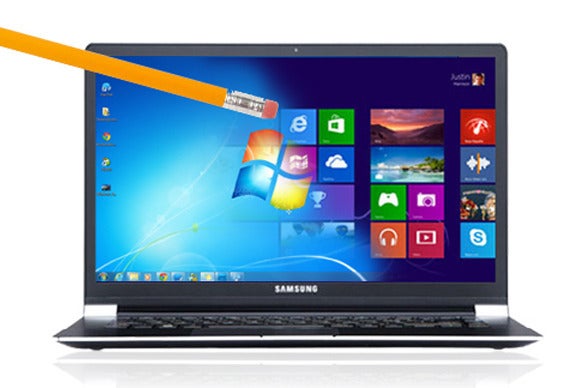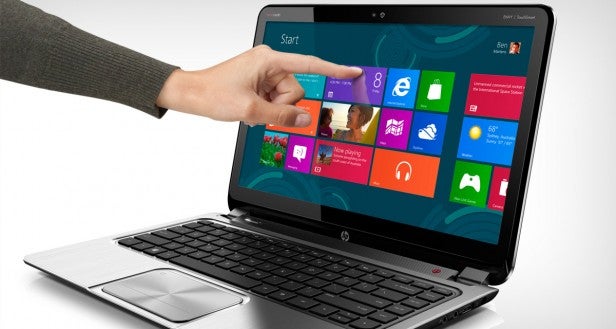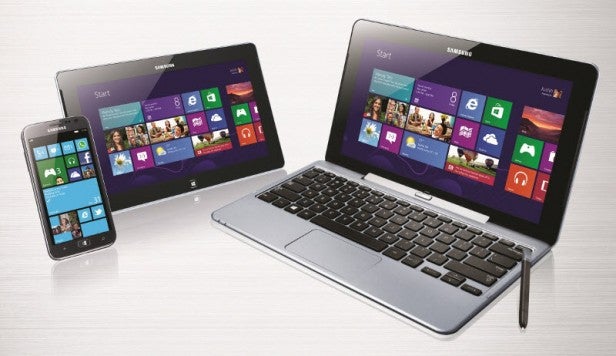Why Microsoft is backtracking with Windows 8.1 Blue

 Four words have triggered talk of the biggest tech U-turn in years. ‘CanSuppressStartScreen’ was found in leaked code for the Windows 8.1 ‘Blue’ software update.
Four words have triggered talk of the biggest tech U-turn in years. ‘CanSuppressStartScreen’ was found in leaked code for the Windows 8.1 ‘Blue’ software update.
Can. Suppress. Start. Screen.
The same start screen Microsoft hailed at launch five months ago as ‘A Beautiful New Start’, the future of computing and the answer to unifying PC and post-PC devices. The ultimate answer to the ultimate question.
Does it really expect to make better progress shipping Windows 7 version 2.0? I think it makes more sense than what it was doing…
Windows 8 pitch is naive
Up to now, Microsoft’s pitch for Windows 8 has been incredibly naive. It equates to this: everyone likes touchscreens; everyone likes tablets; everyone knows smartphones and tablets are eating into PC sales; we don’t have successful smartphones and tablets but look everyone here is an operating system that makes your PC work like a smartphone and tablet!
Except most PCs don’t ship with touchscreens and their software isn’t optimised for touchscreens. Microsoft’s desperate leap of faith was too big and – much like any movie will tell you – those who try hardest to avoid their fate are guaranteed to cause it.
Cue IDC last week revealing PC sales in 2013 experienced their worst ever slump and that Windows 8, far from reviving the market, has slowed it, while pointing the finger at the ‘radical’ interface.

Windows 8 = Windows 7 but even better
What Microsoft forgot was fundamental. Not everyone likes touchscreens, not everyone wants a smartphone and/or tablet to replace their PC and far from everyone wants their PC to operate like their smartphone… especially all in one go and before hardware designs and costs have evolved to ease the transition. These memories now appear to have been restored.
While Microsoft has yet to comment on the ‘CanSuppressStartScreen’ code leak, it is already starting to sell a very different image of Windows 8 to customers in preparation of Blue. One product manager has even gone on record saying he now starts his Windows 8 pitch on the desktop, not the new Start Screen, selling the idea that Windows 8 is the smarter, faster and more secure update to the already popular Windows 7.
That’s the key: Windows 8 is Windows 7 enhanced and it can be something new when you are ready for it to do that. And if you’re not ready for a revolution, Windows 8 can boot straight to the desktop.
That should be Microsoft’s new pitch.

Stand and deliver
The good news for Microsoft is the naive, reckless yet ambitious motivations behind the creation of Windows 8 should ultimately stand it in good stead long-term. Most importantly, while painful, it has made the jump to a unifying PC and post-PC platform where rivals have not. Moreover, Microsoft’s command on the PC sector remains strong. So strong in fact that Gartner reports Windows-based devices still outsold all poster boy Apple’s devices (iPods, iPhones, iPads, Macs and MacBooks combined) last year by 175m to 159m units.
That said, Gartner goes on to claim Apple will overtake Microsoft for devices sold in 2013 and for that Windows 8 will shoulder much of the blame. Windows 8.1 doesn’t fix problems with the company’s convoluted Windows RT branding either, nor the lack of affordable touchscreen hardware. Whether Windows 8 has suffered Windows Vista-like damage to its reputation also remains to be seen.
Ultimately, if it has it would be a shame. When I wrote about why I love and hate Windows 8 I said Windows 8 is “brilliant yet rushed, slick yet jarring, entirely lovable yet utterly hateable and determined to shake up the status quo”.
This remains the case and is something I suspect we won’t see from the next Mac OS X point release.
For more on Windows 8.1, read Can Windows 8 Blue make users care about Windows 8?


